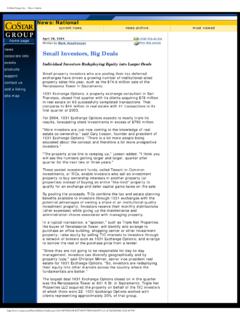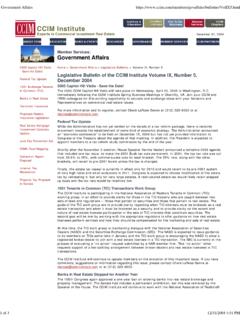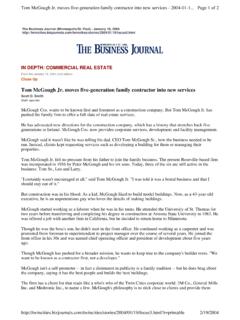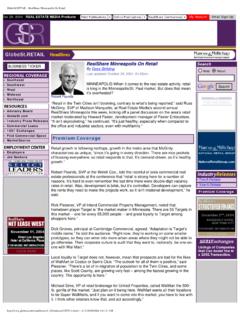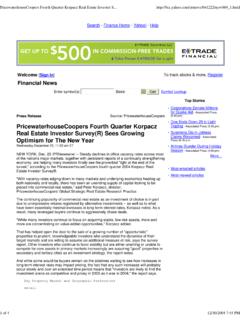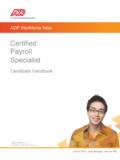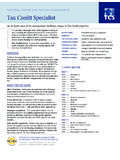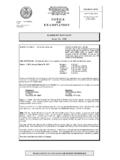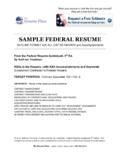Transcription of September/ Tax Watch Cost Segregation Helps …
1 September/ October 2003 Table of Contents Features Containing Sprawl What Office Tenants Want Eight Ways to Boost Your Business Retail Repositioning Cost-Conscious Construction The Self-Storage Transformation Columns Lifestyle Centers Capitalize on Shoppers' Need for Speed Cost Segregation Helps Property Owners Maximize Depreciation Deductions Industry Conference Highlights Technology's Role in Brokerage Evolution Lenders Tighten Loan Standards in Reaction to Uncertain Economy Landlords Must Be Specific if Including Dual-Option Terms in Leases Departments New Mexico's Real Estate Markets Rise to the Occasion Site Selection Methodology Assists College's Campus Relocation Deal Makers Tax Watch Cost Segregation Helps Property Owners Maximize Depreciation Deductions by Eric Johnston Print-friendly version While most property owners are aware of depreciation benefits, few take full advantage of them.
2 It is rare that a building s entire cost is depreciated over the 39-year or life assigned to real property, but when owners classify a building s entire purchase price or construction cost as such, they overlook the benefits of the Internal Revenue Service s depreciation system. Certain items included in a building s cost are in fact considered personal property and qualify for a shorter depreciable life. Property owners can realize a significant tax benefit by correctly identifying personal property and land improvements that are included in a building s cost. For example, assuming a 35 percent tax bracket and an 8 percent discount rate, the net present value benefit is approximately $181,000 for every $1 million dollars of property reclassified from a 39-year to a five-year depreciable asset; approximately $165,000 for property reclassified as a seven-year asset; and approximately $100,000 for property reclassified as a 15-year asset.
3 New Rulings Improve Depreciation The recently passed Jobs and Growth Tax Relief Reconciliation Act of 2003 provides an even greater incentive to properly identify personal property that may be buried within building costs. The act allows an additional first-year depreciation deduction equal to 50 percent of the basis of certain qualified personal property. Under certain conditions, it also applies the bonus depreciation to qualified leasehold improvements, which likely will affect tenant improvement allowances and allocation between building owners and tenants. Depending on the particular situation, recent changes in the IRS depreciation guidelines may offer property owners even greater benefits than those offered by the new tax act.
4 The process of allocating property to its proper tax classification, commonly referred to as cost Segregation , Helps property owners realize depreciation s tax-deferral benefits. By teaming with an experienced accountant, commercial real estate professionals can use cost- Segregation studies to help their clients avoid the financial penalties imposed by the IRS for tax deficiencies related to improper classification and depreciation. Properly performed cost- Segregation studies can reduce the real estate s holding costs, increase cash flow, and maximize the investment returns, which results in happier clients and more profitable projects.
5 Recent IRS changes unrelated to the act also may allow property owners to achieve faster recovery of depreciation unclaimed in previous years, which further increases the value of cost Segregation after a building has been placed in service. Performing a Cost- Segregation Study To maximize depreciation s tax benefits, a building s purchase price or construction cost must be properly segregated among structural components, personal property, and land improvements. Proper Segregation allows each item to be depreciated over the correct tax life. Ideally, building owners should commission cost- Segregation studies in the preconstruction phase of development projects.
6 This allows the project s accountant to accurately track items that qualify for accelerated depreciation. The qualified items then are segregated from the general building costs. However, in most cases, cost- Segregation studies occur on completed properties. After construction ends, detailed cost data are seldom available, and items that qualify for accelerated depreciation typically are combined with real property in large, lump-sum amounts. In such cases, to properly segregate personal property from real property, labor and material costs associated with personal property are estimated and then segregated from general building costs.
7 When performing a study in this manner, it is imperative to follow and document accepted cost-estimating procedures to defend the study s results in the event of an IRS audit. Cost Segregation also must take into account applicable engineering principles and how different building components contribute to the business process. For example, a simple electrical outlet can qualify for depreciation over 39, , 15, seven, or five years depending upon its location and use. Because such technical knowledge is necessary, accounting companies that have in-house engineers capable of properly estimating individual personal property asset costs usually perform cost- Segregation studies.
8 The following example provides an illustration of a cost- Segregation study s benefits. Before the study, an office building owner was depreciating the entire cost of a $10 million building over 39 years. After properly segregating the costs among structural components, personal property, and land improvements, the owner receives additional tax deductions of more than $150,000 in the first year. Assuming a tax rate of 35 percent, the additional deduction reduces his tax bill by more than $50,000 that first year. After discounting future cash flows by 8 percent and summing the net present value over the building s full depreciable life, the owner s total tax benefit is in excess of $220,000.
9 But the tax benefits don t end there. Under the Jobs and Growth Tax Reconciliation Act, the taxpayer receives deductions of nearly $740,000 in the first year, resulting in a tax bill reduction of more than $265,000 that year alone. Such benefits only can be recognized when real and personal property costs are properly segregated. The Benefits Cost Segregation s most obvious benefit is the ability to increase cash flow by maximizing depreciation deductions in a building s early years. A second, more valuable benefit is the ability to defer income taxes to a later date, thereby receiving more valuable dollars today and recognizing a significant net present value benefit over a project s life cycle.
10 The source of these benefits is one of finance s most basic tenets: A dollar in hand today is far more valuable than a dollar in hand 30 or 40 years from now. By claiming depreciation on shorter-lived assets, property owners can shield more of their income from taxes and put more money in their hands today. When purchasing or constructing properties, commercial building owners should consult with experienced tax professionals to make certain they are depreciating real and personal property over the appropriate tax life. Eric Johnston is a cost- Segregation specialist with Ernst & Young s Real Estate Advisory Services Group in Los Angeles.
